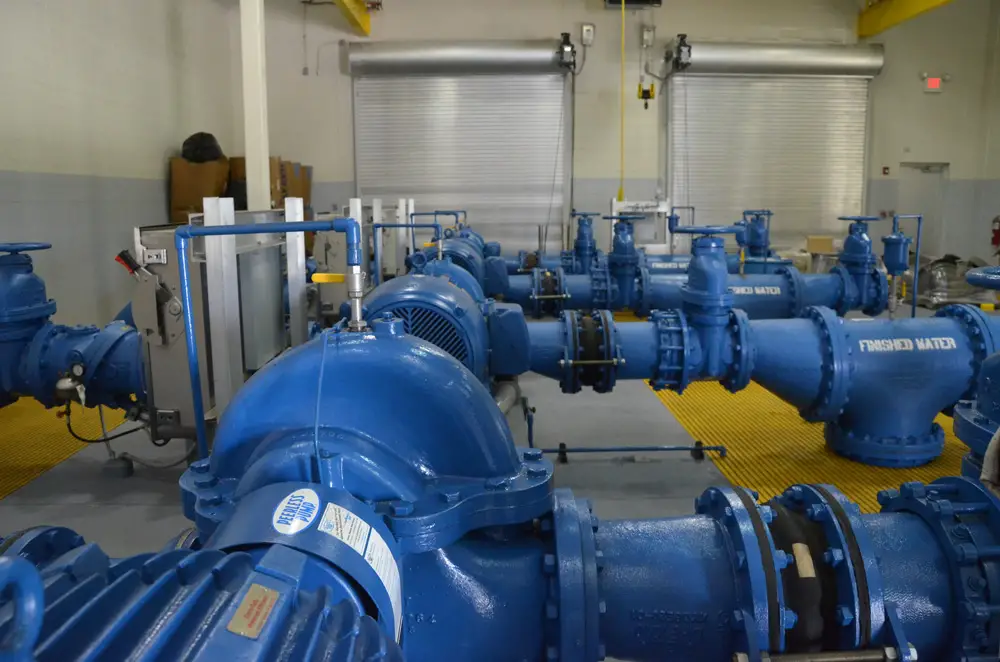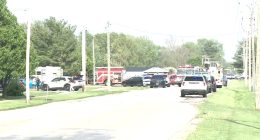
Last November the consultant Palm Coast government had hired to study the city’s utility rates ahead of an increase framed its conclusion in the worst possible way for a council facing criticism almost every time it meets from residents complaining about too much growth. Water and sewer rates would have to increase substantially, the consultant told the council, because of growth: the city’s infrastructure is not keeping up. The consultant, in other words, was giving credence to the critics, who want the city to slow its growth.
The consultant, Eric Grau of Jacksonville-based Stantec, the design and engineering company, was projecting capital needs of $635.7 million between 2024 and 2033, of which $225 million would be needed in the next three years. Even the city’s flush utility doesn’t have that kind of money.
Water and sewer bills would have to go up by 18 percent in three years, though the city could ease the blow by creating a tiered system that would encourage water conservation. Those who used less water would see somewhat smaller bills. And the city would have to sharply increase its utility impact fees, those one-time taxes levied on new homes and businesses to defray the “impact” of development. (See: “Consultant Says Palm Coast Residents Must Pay Cost of Future Growth With Higher Water Bills. Council Recoils.”)
Palm Coast Mayor David Alfin was was ill (nothing to do with the study’s conclusions) so he was not at the council for that discussion. But the idea of a tiered system got support from Council members Theresa Pontieri and Ed Danko. The city administration is also encouraging a tiered system, because it encourages conservation. Such a system is already in place, but additional tiers would limit cost increases at the lower end of the consumption scale.
There was no conclusive agreement at the end of the November workshop, with council members looking for additional models that would reduce the need for sharp rate increases.
Today, the consultant returned, along with Utility Director Mike Flanagan, and this time Alfin was there, too. So was a new rate tier. But the long segment on the revised rate study did not end anymore conclusively or hopefully, probably because the bottom line from the consultant was not much different than it was in November: the city is facing steep utility infrastructure repair and construction costs. Existing rate-payers must assume some of those costs, and any way the consultant slices it, it ends up being around 18 percent over three years.
In fact, the proposal the administration supports would have rates going up 21.5 percent between this coming May and October 2026.
“I am troubled by your presentation,” Alfin told Grau, contesting the method. He noted a 20 percent decrease in single-family permits approved in 2023, compared to 2022, which, to him, tells him that the consultant’s assumptions of growth may not be what they seem. “I’m troubled at the get go with the starting assumption.”
Flanagan trie to put the mayor at ease by describing wastewater capacity issues–shifting capacity from this plant to that plant–as the expansion of a pant from a capacity of 2 million to 4 million takes place. But it wasn’t clear how that answered the mayor’s overall concern. “We had a bust, we had a boom but if you look at the trendline, in my mind, we’re not really far off from the original forecast for our infrastructure needs,” Alfin said, suggesting that perhaps the capital spending projected by the rate study are not as necessary. “I’m not fearing a consequence of not investing at this level, at this moment in time,” he said.
Flanagan’s presentation today included a long segment on the utility department’s accomplishments. The segment was clearly intended to build some support for what the utility does, though the utility faces that unforgiving paradox: residents’ complaints are few, the water quality is high, Palm Coast tends to have a strong record of flood protection. For all that, residents would rebel at yet another rate increase, when, just in 2018, the city increased rates 20.6 percent over the next four years. Last year, the city increased stormwater rates by 75 percent over five years. Stormwater, sewer and water rates all go on the same bill. To residents, those bills are zooming up too fast.
The city has secured about $17 million in grant funding tied to three specific water main extension projects, but that’s a small dent in the $635 million in needs. Operating expenditures for the utility are at $40 million today, but are projected to rise to $70 million a year by 2033. So as Grau told the council in November, even indexing rates to inflation, the city would fall far short of what it would need. Between 2025 and 2033, the city would need to fun $270 million in debt for its capital program. That’s generally financed in part by impact fees.
Rate payers pay two water charges: the fixed, base rate, just to be a customer, plus the charge for the actual amount of water they use. The council has the option of weighing rate increases one one side or the other of those rates, keeping in mind that the two need to be generally balanced. That balance is in place now, Grau said. “We currently have a structure that is very much such that it’ll preserve fiscal stability, revenue stability,” he said.
Grau presented three different scenarios, one of which would reduce fixed charges a little, while increasing volume charges. Under one such scenario, and with conservation in mind, almost two-thirds of customers’ bills would increase but by less than 12.5 percent. The scenario recommended by the city staff, Grau said, would have rates rise 6 percent in May, another 6 percent on Oct. 1, 6 percent on Oct. 1, 2025, and 3.5 percent on Oct. 1, 2026–that’s the 21.5 percent proposal mentioned above.
Again, most of those figures, with small variations had been presented at the November workshop.
“I have some problems with this too,” Danko said, echoing the mayor, before going on another economically challenged anti-Biden rant, which nevertheless appears to be driving his policy approach: “So my feeling is I’m willing to put this off till next year when President Trump is back in office and the price of fuel drops and the cost of everything goes with it. And we’re then maybe looking at a normal cost of living increase. So I would like to see us just tighten our belts for one year and till the political landscape changes.” Or, more less disingenuously, when Danko is not running for a County Commission seat, as he is now, and having to defend a rate increase in Palm Coast.
Council member Nick Klufas, who is also running for a County Commission seat, questioned the consultant about what scenario might have prevented the proposed rate increases. (He was more interested in indexing each year’s increase to inflation or to another index, as long as it generates steady revenue). What he did not mention was that he was the only council member on the dais who was part of the vote approving the 20 percent rate increase in 2018, spread over four years.
Pontieri pointed out that next year’s national political scene won’t make a difference whoever is in office, with inflation lower now, and low enough that it will not match up with the city’s needs for additional revenue, so relying on increases indexed to inflation won’t work. She liked the proposals that put weight on conservation, allowing consumption to play a role in customers’ spending, but she also did not think all the necessary information was in.
So as in November, the consultant was again tasked with drafting an amendment to the study, showing what the consequences would be if certain capital projects were delayed, since they drive a lot of the need for the rate increases through 2028. Pontieri also wants to know whether the rate increases could be split from the recommended impact fess, so that the two would be approved independently.
![]() \
\
utility-rates-study-2024





